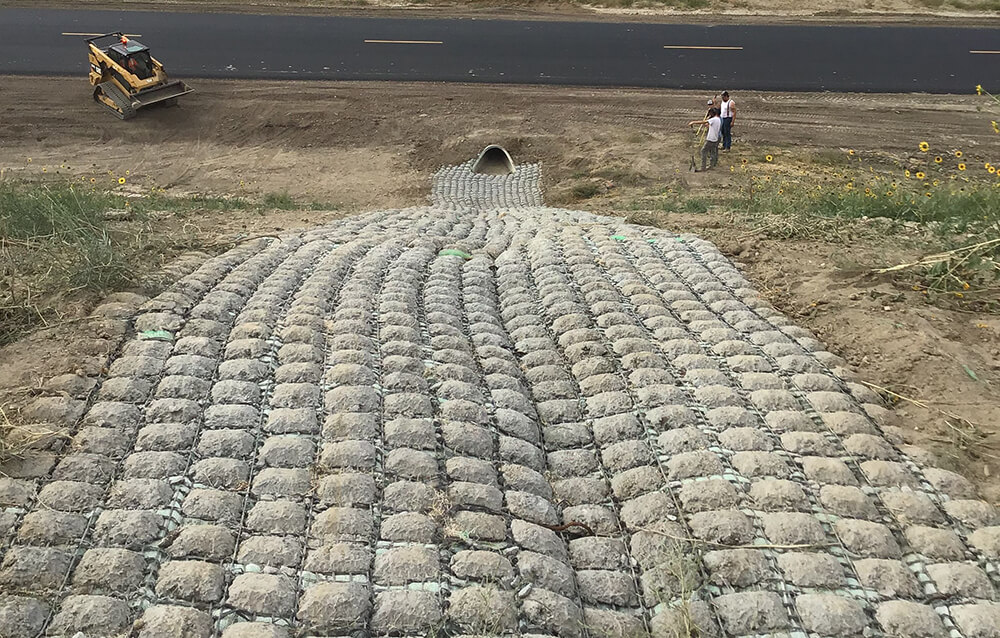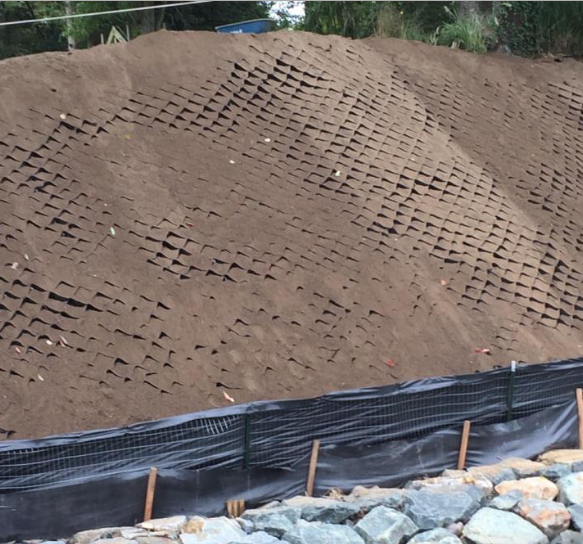Memphis Erosion Control Solutions Memphis TN: Your Local Erosion Control Specialists
Wiki Article
Best Practices for Disintegration Control in Building And Construction Projects
Are you functioning on a building project and worried regarding erosion control? In this short article, we will direct you through the best techniques for protecting against disintegration on your website. hydroseeding. Obtain prepared to tackle disintegration head-on and make sure the success of your construction task.5 Crucial Disintegration Control Techniques

To properly manage disintegration on your building website, you'll require to carry out necessary strategies such as slope stablizing and debris control procedures. Slope stabilization is crucial in preventing soil disintegration on steep inclines. One more efficient strategy is the usage of disintegration control coverings or mats, which are positioned on the slope and help preserve dirt particles while permitting greenery to expand.
Efficient Debris and Runoff Management

You can properly handle debris and overflow in your building and construction task by implementing appropriate erosion control procedures. Debris and overflow management is important to avoid disintegration and safeguard the surrounding setting. One efficient step is the setup of silt fencings along the perimeter of the construction website. These fences help to contain sediment and prevent it from getting in close-by water bodies. Another essential method is the execution of erosion control coverings or floor coverings. These coverings give a protective layer on bare dirt, lowering the impact of rains and preventing erosion. Additionally, the usage of debris basins or debris traps can aid to record debris and stop it from getting in stormwater systems. Normal upkeep of these procedures is vital to guarantee their effectiveness throughout the building task. This consists of cleaning and inspecting sediment containers and frequently changing silt fences and disintegration control blankets as required. By executing these erosion control actions, you can successfully manage debris and overflow in your building and construction project, reducing the impact on the environment and complying with regulatory requirements.
Secret Factors To Consider for Slope Stabilization
When taking into consideration slope stabilization, it is essential to examine the surface and identify prospective locations of instability. You need to very carefully take a look at the slope's qualities, such as its angle, composition, and drainage patterns. Search for signs of disintegration, such as subjected origins, splits, or down soil. These indicators can give you an idea of where stabilization measures may be needed.Once you have actually determined the unstable locations, you can start carrying out measures to stabilize the incline. One typical approach is the use of maintaining walls or terracing to produce a collection of flat actions, which can aid distribute the weight and protect against more erosion. Another alternative is to grow plants on the slope, as the origins can help anchor the dirt and control erosion. Additionally, installing erosion control coverings or floor coverings can offer prompt security while plants becomes established.
It's crucial to on a regular basis keep an eye on the stabilized slopes to guarantee their effectiveness. Keep an eye out for any kind of signs of movement or erosion, and take immediate action if essential. Routine upkeep, such as evaluating and repairing any kind of damaged measures, is likewise important to ensure long-term security.
Ideal Practices for Vegetation and Dirt Security
If needed,One effective means to protect plant life and dirt on slopes is by regularly examining for indications of disintegration and taking instant activity. By being aggressive and observant, you can protect against more damages and make sure the stability of the incline. Beginning by inspecting the incline for any kind of indications of disintegration, such as exposed roots, bare soil patches, or debris buildup at the bottom. anchor If you see any one of these indicators, it is essential to deal with the problem quickly. Implement disintegration control measures such as installing disintegration control coverings, mulching, and even constructing preserving walls if required. Furthermore, growing plants can significantly aid in stabilizing the dirt. Choose native plants that have deep root systems, as they are much more efficient in stopping disintegration. See to it to regularly evaluate the wellness of the vegetation and give needed maintenance, like watering and fertilizing. Remember, disintegration can swiftly intensify and cause severe damage, so it's vital to resolve it immediately. By taking proactive measures and on a regular basis monitoring the incline, you can safeguard the vegetation and dirt, making sure the lasting security of the location.Executing Proper Water Drainage Equipments
To successfully carry out correct water drainage systems, it's essential to think about the slope gradient and soil type. Recognizing these variables is necessary when it comes to handling water flow and avoiding disintegration. The incline gradient plays a substantial role in determining just how water crosses Click This Link the land. Steeper slopes can bring about much faster water flow, raising the threat of disintegration and flooding. On the various other hand, gentler inclines permit water to move much more slowly, lowering disintegration possibility. By examining the slope gradient, you can create an efficient drain system that fits the natural water motion.Soil kind also influences drainage system layout. Various soil types have differing degrees of leaks in the structure, impacting how water is absorbed and drained pipes. Sandy soils tend to drain faster due to their coarse appearance, while clay soils have a slower drainage price due to their site small nature. Understanding the soil type aids in selecting ideal drain methods, such as making use of permeable materials or setting up French drains. Additionally, taking into consideration the soil features aids protect against waterlogging, which can bring about bad plant growth and damages to structures.
Conclusion
In final thought, when it comes to disintegration control in building and construction tasks, you have to adhere to these finest methods. Think about slope stablizing techniques to make sure the stability of the site. By complying with these necessary methods, you can efficiently control erosion and guarantee the success of your building job.To effectively control disintegration on your building site, you'll need to implement essential strategies such as incline stabilization and debris control procedures. Slope stabilization is critical in stopping soil erosion on high inclines. An additional efficient method is the usage of disintegration control coverings or floor coverings, which are put on the slope and aid retain soil particles while allowing vegetation to expand. An additional choice is to grow greenery on the slope, as the origins can help secure the dirt and control erosion. Implement erosion control actions such as mounting disintegration control coverings, mulching, or also constructing preserving wall surfaces if required.
Report this wiki page